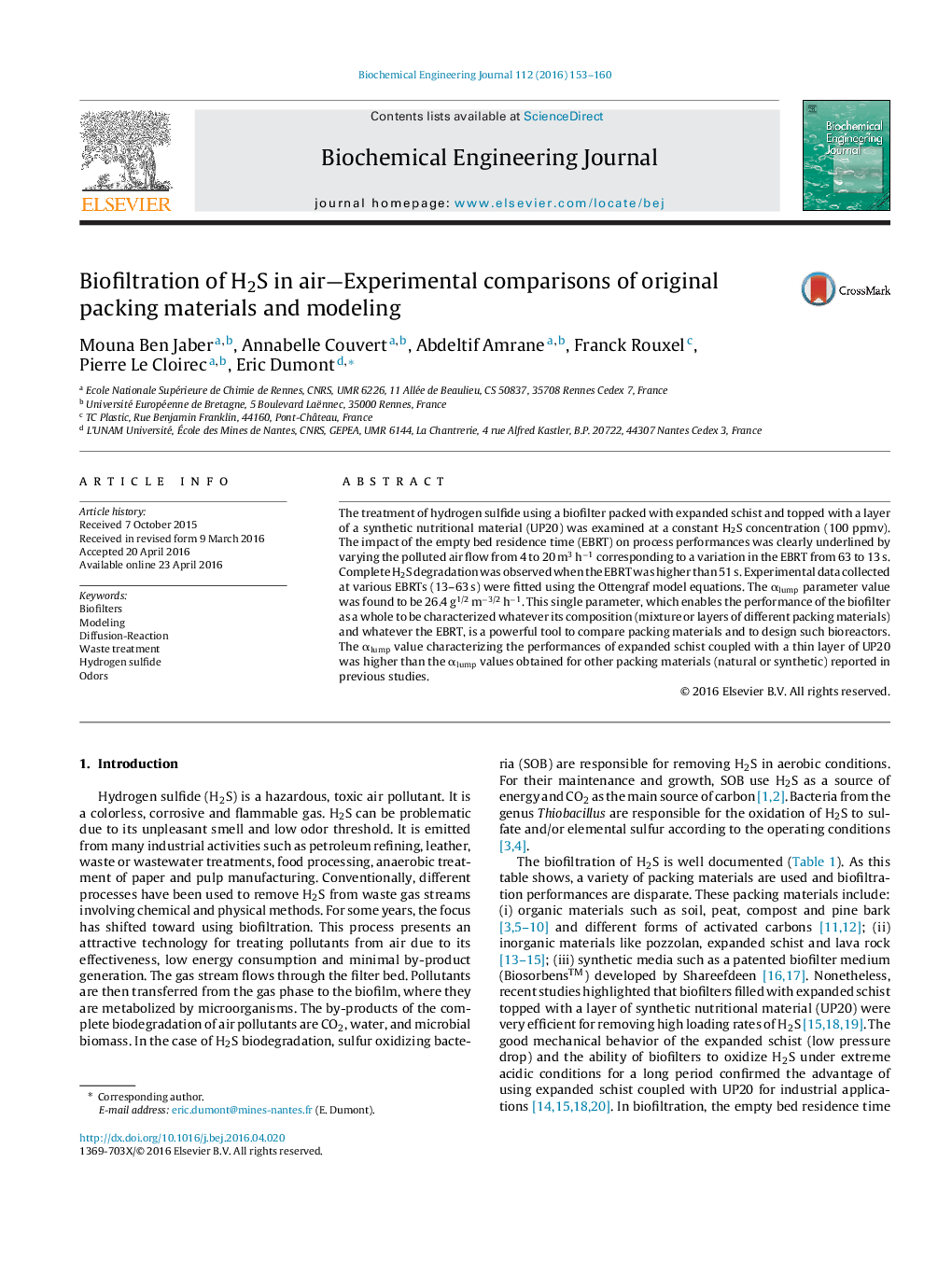| Article ID | Journal | Published Year | Pages | File Type |
|---|---|---|---|---|
| 2718 | Biochemical Engineering Journal | 2016 | 8 Pages |
•H2S biofiltration was carried out at a constant H2S concentration (100 ppmv).•Expanded schist topped with nutritional particles UP20 was used as packing material.•Experimental data were fitted using the Ottengraf model equations.•The αlump parameter value was found to be 26.4 g1/2 m−3/2 h−1.•Such biofilter configuration is the most efficient to remove high H2S concentrations.
The treatment of hydrogen sulfide using a biofilter packed with expanded schist and topped with a layer of a synthetic nutritional material (UP20) was examined at a constant H2S concentration (100 ppmv). The impact of the empty bed residence time (EBRT) on process performances was clearly underlined by varying the polluted air flow from 4 to 20 m3 h−1 corresponding to a variation in the EBRT from 63 to 13 s. Complete H2S degradation was observed when the EBRT was higher than 51 s. Experimental data collected at various EBRTs (13–63 s) were fitted using the Ottengraf model equations. The αlump parameter value was found to be 26.4 g1/2 m−3/2 h−1. This single parameter, which enables the performance of the biofilter as a whole to be characterized whatever its composition (mixture or layers of different packing materials) and whatever the EBRT, is a powerful tool to compare packing materials and to design such bioreactors. The αlump value characterizing the performances of expanded schist coupled with a thin layer of UP20 was higher than the αlump values obtained for other packing materials (natural or synthetic) reported in previous studies.
